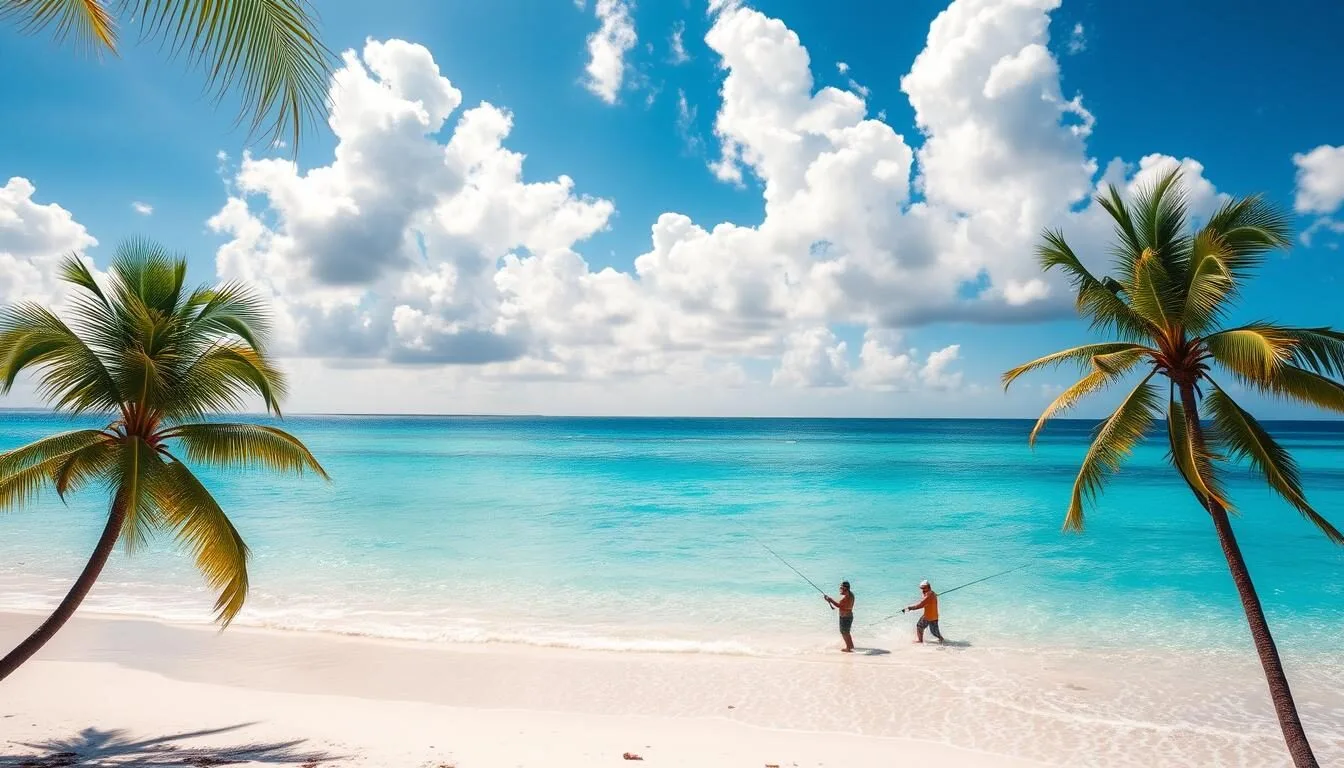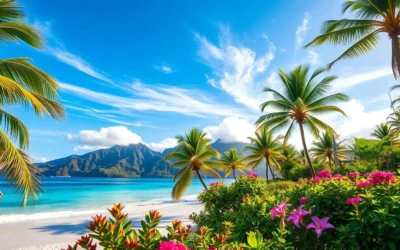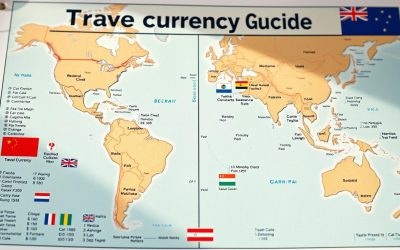✓ Accommodations ✓ Flights ✓ Rental Cars ✓ Tours & Activities
Did you know that the weather in the Northern Mariana Islands varies significantly throughout the year, impacting your travel experience? The islands’ tropical climate means it’s hot and humid year-round, but the wet and dry seasons can make or break your trip.
The temperature typically ranges from 76°F to 88°F, making it an attractive destination for those seeking warm weather. However, to make the most of your trip, it’s crucial to plan around the best months for your preferred activities. Whether you’re looking for perfect beach days, optimal diving conditions, or comfortable hiking weather, the right time can make all the difference.
By understanding the weather patterns and months that suit your travel plans, you can ensure a weather-savvy trip to this tropical paradise.
Understanding the Northern Mariana Islands Climate
The Northern Mariana Islands’ climate is shaped by its unique geographic location. Situated in the western Pacific Ocean, the islands’ tropical climate is characterized by minimal seasonal variations.
Geographic Location and Its Impact on Weather
The islands’ proximity to the equator results in year-round warm weather conditions, making them an attractive destination for those seeking tropical getaways. The surrounding ocean plays a crucial role in moderating the climate, preventing extreme temperature fluctuations and maintaining relatively stable weather conditions. Additionally, the islands’ geographic features, including mountains and valleys, create microclimates with slightly different weather patterns across various locations.
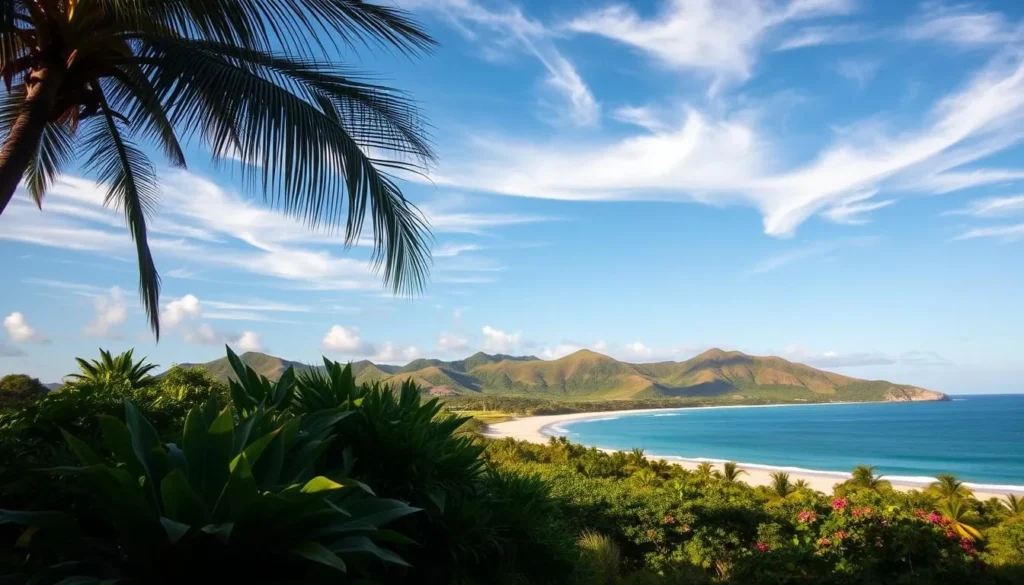
Year-Round Temperature Overview
The temperature in the Northern Mariana Islands remains relatively consistent throughout the year. Average high temperatures range from 84°F to 88°F, while average low temperatures range from 76°F to 79°F. This minimal variation in temperature means that the concept of hot and cold seasons is not particularly relevant in the context of the Northern Mariana Islands’ climate.
The Two Distinct Seasons of Northern Mariana Islands
Understanding the seasonal patterns in the Northern Mariana Islands is crucial for planning a weather-savvy trip. The islands experience two distinct seasons that significantly influence the weather throughout the year.
Dry Season: December to April
The dry season, spanning from December to April, offers clearer skies, less rainfall, and more consistent weather patterns, making it the preferred time for most visitors. During this period, the weather is generally more stable, with fewer rain showers. The dry season is characterized by lower humidity and more sunshine, creating ideal conditions for outdoor activities.
Wet Season: May to November
In contrast, the wet season, which lasts from May to November, is marked by increased cloud cover, higher humidity, and more frequent rain showers that typically occur in the afternoons. Although the rain can be intense, it often clears up quickly, allowing for some sunshine. The wet season is also influenced by regional climate systems and trade winds, contributing to the islands’ predictable weather cycles.
| Season | Months | Characteristics |
|---|---|---|
| Dry Season | December to April | Clearer skies, less rainfall, consistent weather |
| Wet Season | May to November | Increased cloud cover, higher humidity, frequent rain showers |
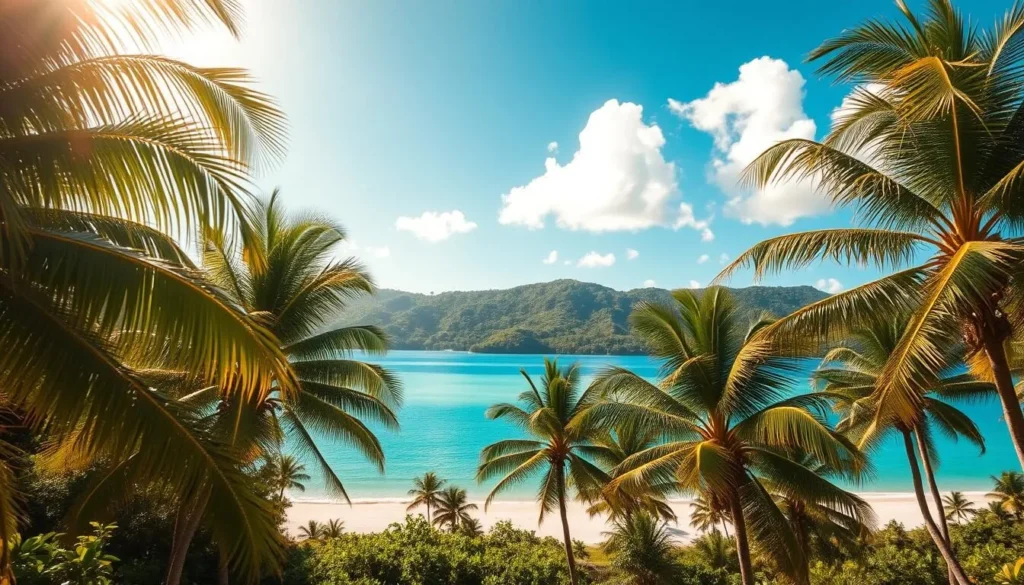
Northern Mariana Islands: Best Months for a Weather-Savvy Trip
The best time to visit the Northern Mariana Islands is a critical consideration for travelers seeking to enjoy the islands’ beautiful beaches and outdoor activities. Understanding the seasonal weather patterns can significantly enhance your travel experience.
January to April: Prime Visiting Window
The months from January to April represent the prime window for visiting the Northern Mariana Islands. During this period, you can expect optimal weather conditions, characterized by sunny days, minimal rainfall, and comfortable temperatures. This makes it ideal for a wide range of activities, from beach relaxation to hiking and cultural exploration. The tourism score during these months is high, favoring clear, rainless days with perceived temperatures between 65°F and 80°F.
| Month | Average Temperature | Rainfall |
|---|---|---|
| January | 75°F | Low |
| February | 76°F | Low |
| March | 77°F | Low |
| April | 78°F | Moderate |
Shoulder Seasons: November and May
For travelers looking for good value with fewer crowds, the shoulder seasons of November and May are worth considering. These months offer relatively favorable weather conditions, with comfortable temperatures and fewer rainy days compared to the wet season. While they may not be as dry as the prime visiting window, they can still provide a pleasant travel experience. The beach/pool score during these months remains relatively high, making them suitable for hot-weather activities.
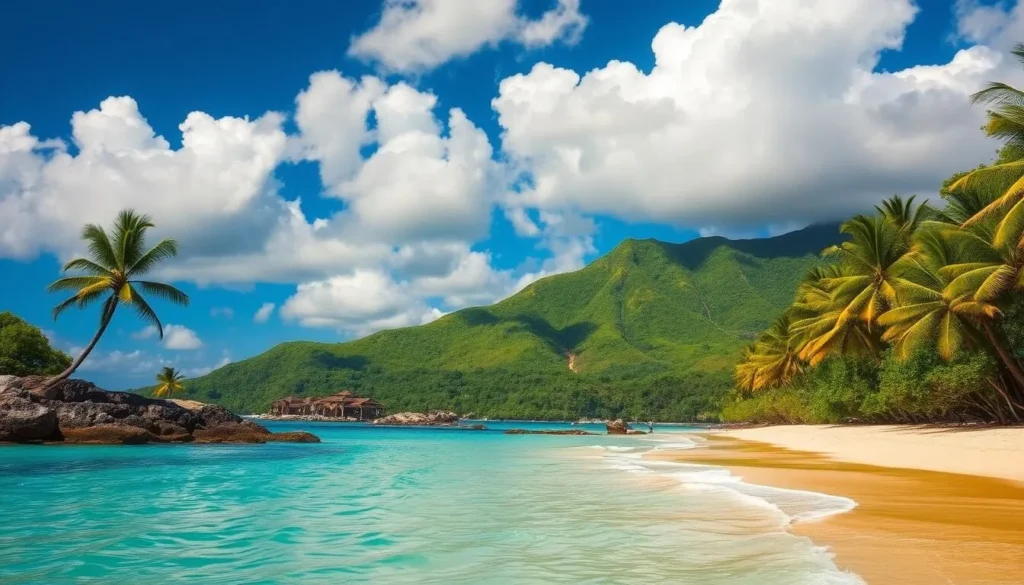
Temperature Patterns Throughout the Year
The Northern Mariana Islands exhibit a relatively consistent temperature pattern throughout the year. This consistency is a hallmark of tropical climates, where the temperature remains warm and inviting for tourists year-round.
Monthly Temperature Averages
The average high temperatures in the Northern Mariana Islands range from 84°F in January and February to 88°F in June. The average low temperatures vary from 76°F in January and February to 79°F in June and July. These temperatures indicate a relatively stable climate, with only about a 4°F difference between the coolest and warmest months. You can expect average highs to be around 85°F to 86°F for most of the year, making it an ideal destination for sun-seekers.
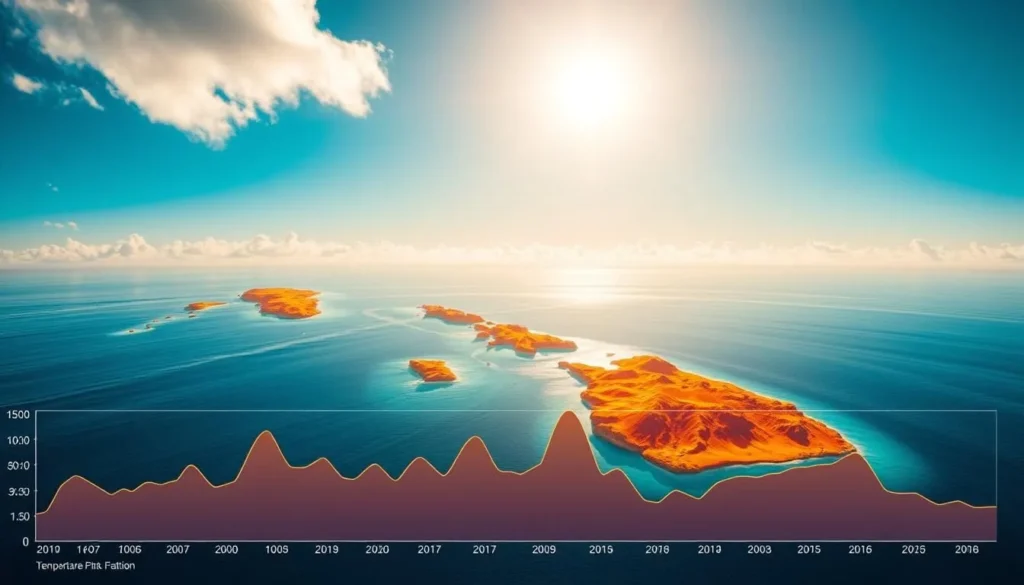
Day vs. Night Temperature Variations
The day-to-night temperature fluctuations in the Northern Mariana Islands typically range from 7-9°F. While daytime temperatures can reach the mid-80s, nighttime temperatures remain pleasantly warm, usually in the mid-70s to late 70s. This variation is comfortable for most visitors, allowing for enjoyable outdoor activities both during the day and at night. The perceived temperature may differ from the actual reading due to factors like humidity and wind, affecting your comfort level during different months.
Rainfall and Precipitation Patterns
The Northern Mariana Islands experience rainfall throughout the year, with significant seasonal variations. This variability affects the islands’ climate and is crucial for travelers to understand when planning their trip.
Wettest Months: August and September
August and September are the wettest months in the Northern Mariana Islands, with average rainfall of 8.9 and 8.3 inches, respectively. During these months, the chance of precipitation is high, and rain typically falls in short, intense bursts.
Driest Period: February and March
In contrast, February and March represent the driest period, with minimal rainfall averaging less than 1 inch per month. These months are ideal for outdoor activities and beach time, making them a great time to visit if you prefer drier weather.
| Month | Average Rainfall (inches) |
|---|---|
| January | 1.6 |
| February | 0.7 |
| March | 0.5 |
| August | 8.9 |
| September | 8.3 |
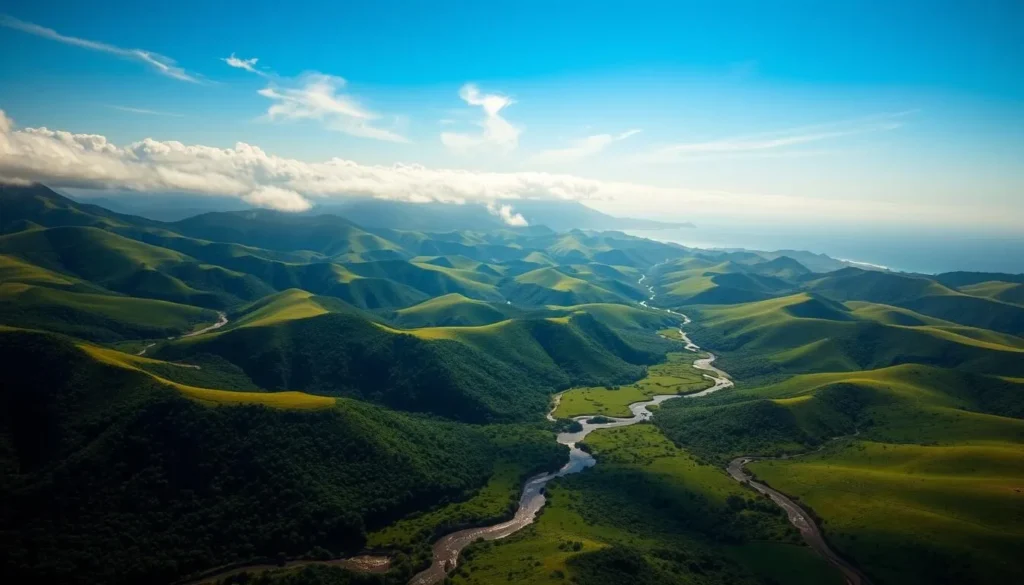
Cloud Cover and Sunshine by Month
The amount of sunshine and cloud cover in the Northern Mariana Islands changes substantially over the months, impacting the overall weather conditions during your visit.
The Clearest Skies
From January to April, the Northern Mariana Islands enjoy their clearest skies. March stands out as the clearest month, with the sky being clear, mostly clear, or partly cloudy approximately 52% of the time. This period provides ample sunshine, making it ideal for outdoor activities.
Overcast Periods
In contrast, the period from July to October is characterized by overcast conditions. August is the cloudiest month, with the sky being overcast or mostly cloudy about 91% of the time. Even during this cloudier season, mornings often start clearer, offering some sunshine.
| Month | Clear/Mostly Clear/Partly Cloudy (%) | Overcast/Mostly Cloudy (%) |
|---|---|---|
| January | 50 | 20 |
| March | 52 | 18 |
| August | 9 | 91 |
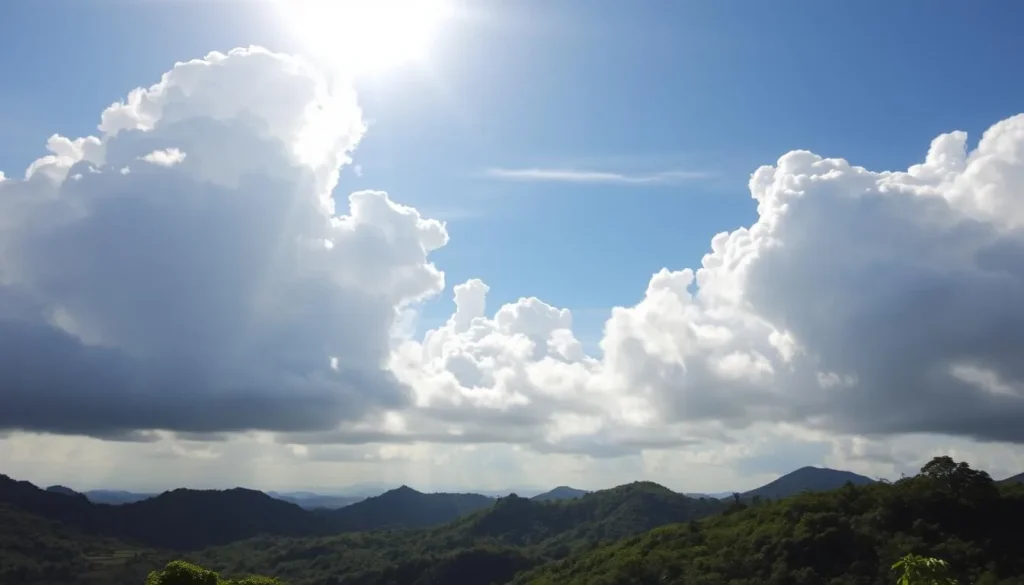
Understanding these patterns can help you plan your activities and make the most of your visit, whether you’re looking for sunny days or cooler, cloudier periods.
Humidity Levels and Comfort Factors
The tropical climate of the Northern Mariana Islands means high humidity is a year-round condition. The perceived humidity level remains consistently high, staying within 2% of 98% throughout the year, categorized as muggy, oppressive, or miserable based on dew point measurements.
Managing High Humidity Year-Round
To manage the high humidity, it’s essential to stay hydrated, wear appropriate clothing, and plan outdoor activities during the most comfortable times of day. Early morning or late afternoon is ideal for more strenuous activities. The humidity affects the perceived temperature, making it feel warmer than the actual reading.
Most Comfortable Periods for Outdoor Activities
Despite the consistently high humidity, certain periods offer slightly more comfortable conditions for outdoor activities, particularly during the dry season when lower rainfall and stronger trade winds provide some relief. This makes it a more comfortable time for outdoor exploration.
| Season | Humidity Level | Comfort Conditions |
|---|---|---|
| Dry Season | High | More Comfortable |
| Wet Season | Very High | Less Comfortable |
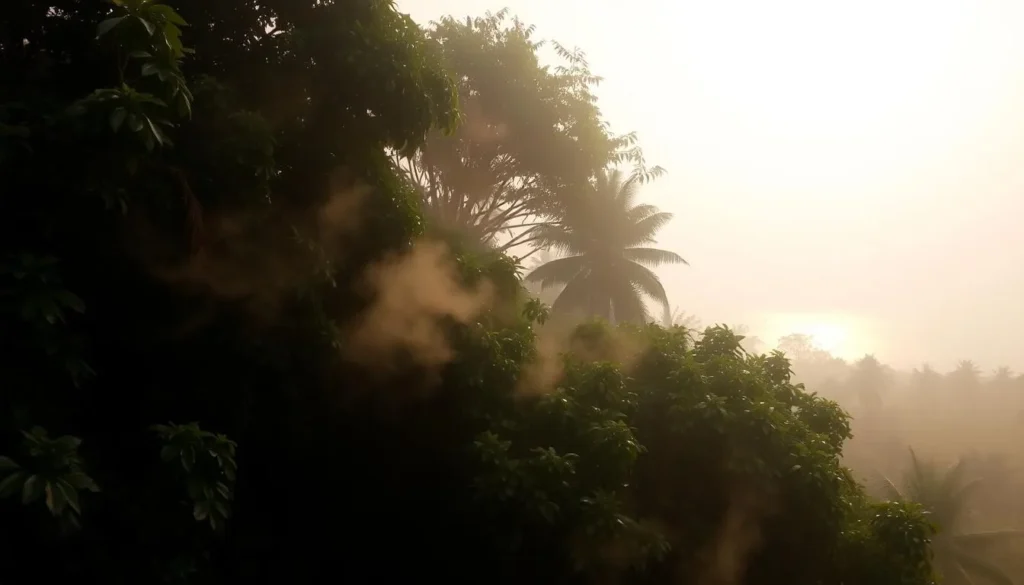
Water Temperature and Ocean Activities
Experience the consistently warm water temperatures of the Northern Mariana Islands, perfect for a range of ocean activities. The average water temperature remains within 2°F of 83°F throughout the year, making it an ideal destination for swimming, snorkeling, and diving.
Best Months for Swimming and Snorkeling
The best months for swimming and snorkeling in the Northern Mariana Islands typically coincide with the dry season, from December to April. During this time, clearer skies and calmer seas create optimal conditions for these activities. Water temperatures range from 81°F in February and March to 82°F in April, making it comfortable for extended periods in the water.
Diving Conditions Throughout the Year
Diving conditions vary throughout the year due to factors like underwater visibility, currents, and marine life activity. While the water temperature remains warm, ranging from 81°F to 85°F, the visibility and sea conditions change with the seasons. The dry season offers better visibility, while the wet season can bring more marine life activity.
| Month | Water Temperature (°F) |
|---|---|
| Jan | 82 |
| Feb | 81 |
| Mar | 81 |
| Apr | 82 |
| May | 83 |
| Jun | 84 |
| Jul | 85 |
| Aug | 85 |
| Sep | 85 |
| Oct | 84 |
| Nov | 84 |
| Dec | 83 |
Planning Around Daylight Hours
As you plan your visit to the Northern Mariana Islands, it’s essential to consider the daylight hours and how they affect your activities. The length of the day varies significantly over the course of the year, with the shortest day being December 22, with 11 hours and 14 minutes of daylight, and the longest day being June 21, with 13 hours and 2 minutes of daylight.
Sunrise and Sunset Patterns
The sunrise times range from as early as 5:45 AM in June to as late as 6:47 AM in January. Similarly, sunset times vary between 5:43 PM in November and 6:51 PM in July. Understanding these patterns can help you plan your day effectively, making the most of the available daylight hours.
Maximizing Daylight for Activities
To maximize your daylight hours for various activities, consider planning early morning excursions to beat the heat and avoid afternoon rain showers during the wet season. This strategy not only enhances your experience but also allows you to enjoy the golden hours for photography and other outdoor activities that benefit from specific light conditions.
Best Months for Specific Activities
When planning your trip to the Northern Mariana Islands, understanding the best times for specific activities can greatly enhance your experience. The islands offer a range of activities, from beach relaxation to hiking and exploration, each with its optimal timing.
Optimal Times for Beach Activities
The best time for beach activities in the Northern Mariana Islands is from late November to late April. During this period, the beach/pool score is high, indicating clear, rainless days with comfortable temperatures between 75°F and 90°F. The score peaks in the last week of March, making it the ideal time for swimming, sunbathing, and water sports.
Ideal Periods for Hiking and Land Exploration
For hiking and land exploration, the dry season from January to April is the most suitable. Trails are less muddy, and the risk of sudden downpours is minimized, making it safer and more enjoyable to explore the islands’ natural beauty. This period aligns with the peak tourism score, ensuring comfortable temperatures and clear skies.
Island-Specific Weather Patterns
The Northern Mariana Islands, comprising Saipan, Tinian, and Rota, exhibit subtle variations in weather patterns due to their geographic positions and topography. Understanding these differences is crucial for planning a trip that involves visiting multiple islands.
The diverse geography of the islands influences their weather conditions. For instance, the topography of each island can affect temperature and rainfall.
Saipan Weather Considerations
Saipan, being the largest and most populated island, has weather patterns that are generally representative of the archipelago. However, its eastern and western coasts can experience different weather conditions. The island’s varied topography, including mountains and coastal areas, contributes to these variations.
Tinian and Rota Climate Variations
Tinian and Rota, while sharing similar overall climate characteristics with Saipan, have distinct weather patterns. Tinian’s smaller size and flatter terrain can result in slightly different rainfall patterns. Rota, the southernmost island, tends to receive more rainfall, leading to lusher vegetation.
| Island | Weather Characteristics |
|---|---|
| Saipan | Varied weather between eastern and western coasts |
| Tinian | Different rainfall patterns due to smaller size |
| Rota | Receives more rainfall, resulting in lush vegetation |
Packing Tips for Different Seasons
Packing for the Northern Mariana Islands requires a thoughtful approach, considering the island’s unique climate and seasonal variations. The key to a comfortable and enjoyable trip is understanding what to pack for the different seasons.
Essential Items Year-Round
Regardless of when you visit, there are certain essentials you should always pack. Lightweight, breathable clothing is a must due to the consistently warm temperatures and high humidity. Moisture-wicking fabrics and quick-dry clothing will help keep you comfortable. Don’t forget sun protection, including high-SPF sunscreen, UV-blocking sunglasses, and a wide-brimmed hat to shield you from the intense tropical sun. Water-resistant footwear is also crucial for outdoor activities.
Season-Specific Packing Recommendations
While some items are essential year-round, there are season-specific items to consider. During the wet season (May to November), include a light rain jacket or poncho to be prepared for sudden downpours. For the windier months (November to June), a light windbreaker can be useful. By packing these season-specific items, you’ll be well-prepared for the weather conditions you’re likely to encounter.
Weather Hazards and How to Prepare
To ensure a safe and enjoyable trip to the Northern Mariana Islands, it’s vital to understand the weather hazards you might face. The islands are prone to certain weather-related risks, particularly during specific times of the year.
Typhoon Season Awareness
The Northern Mariana Islands are susceptible to typhoons, which typically occur between July and November. During this period, there’s a heightened chance of severe weather conditions, including heavy rain and strong wind. Staying informed about weather forecasts and typhoon warnings is crucial for travel safety.
Safety Tips for Changing Weather Conditions
To ensure your safety, be prepared for sudden changes in weather. This includes carrying appropriate gear for rain and wind, and staying updated on the latest weather forecasts. When engaging in outdoor activities like hiking or water sports, be aware of the weather conditions and adjust your plans accordingly.
| Weather Hazard | Precaution | Best Practice |
|---|---|---|
| Typhoons | Stay informed about forecasts and warnings | Follow local instructions and evacuation orders |
| Heavy Rain | Carry rain gear | Avoid flooded areas |
| Strong Winds | Secure outdoor items | Stay indoors during strong gusts |
Planning a Weather-Flexible Itinerary
Adapting your travel plans according to the weather can make your Northern Mariana Islands trip more enjoyable. A flexible itinerary allows you to capitalize on favorable weather conditions while having backup plans for unexpected rain or wind.
Indoor Activities for Rainy Days
On rainy days, explore the rich cultural heritage of the Northern Mariana Islands through its museums and cultural centers. You can visit the American Memorial Park or the Commerce Center to learn about the islands’ history. Enjoy shopping at local markets or indulge in the islands’ culinary delights at various restaurants. Some popular indoor activities include:
- Visiting local art galleries
- Sampling traditional Chamorro cuisine
- Relaxing at spa centers
Making the Most of Clear Weather Windows
When the weather is clear, maximize your outdoor activities. Spend your days at the beautiful beaches, go hiking, or explore the islands’ natural landscapes. Prioritize time-sensitive activities like snorkeling or diving during optimal weather conditions. Make the most of your travel by enjoying the islands’ scenic views and outdoor adventures.
Some top recommendations for clear days include visiting Micro Beach or exploring the Taga Historic District. Be sure to check the daily weather forecast to plan your activities accordingly and make the most of your trip.
Conclusion: Making the Most of Your Northern Mariana Islands Visit
To maximize your time in the Northern Mariana Islands, it’s essential to grasp the local climate conditions.
The best time to visit for hot-weather activities is from late November to late April, based on the beach/pool score. For general outdoor tourist activities, the best period is from early January to early April, with a peak score in the last week of February.
This period offers clear skies, minimal rainfall, and comfortable temperatures, making it ideal for most activities. Weather is a crucial factor, but the islands offer unique experiences year-round.
Each season provides its own special opportunities and perspectives, so it’s worth being flexible and prepared. By understanding the weather patterns and being ready for occasional surprises, you can make the most of your trip.
The islands’ climate conditions favor clear, rainless days with perceived temperatures between 65°F and 80°F. This knowledge will help you balance your expectations with the realities of tropical weather, ensuring a memorable visit.
The above is subject to change.
Check back often to TRAVEL.COM for the latest travel tips and deals.
